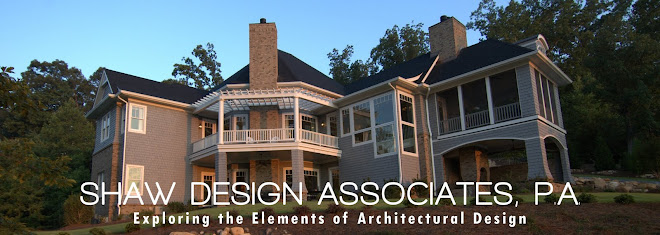I call it 'inside-out' design because I have learned that what is planned for the outside (exterior) of your home can be just as important as what goes on inside. Sure, you may want a family room with a fireplace and that opens into the kitchen. But subtleties like window placement, room symmetry, ceiling heights, and architectural details are the integral framework that interior design relies on. Good architecture is the foundation for an interior worthy of the pages of Home and Garden magazine.
Before working for an architect, it was relatively easy for me to lay out a floor plan that met all interior needs…the kitchen near an eating area…a bathroom near a guest suite. Now I realize that on the inside of a home, every wall, every tray or vaulted ceiling, every jog and turn in a hallway affects 101 different things on the exterior. Without an architect to consider such ramifications, a house starts to look quite lost and disjointed on the outside. Part of the beauty of a well-designed home is its seamless integration of the inside and outside elements. Without careful consideration of both of these crucial aspects of your home, that 'feel good' feeling of good design won't quite be accomplished.


 Have you ever seen Star Trek, Deep Space Nine?
Have you ever seen Star Trek, Deep Space Nine?